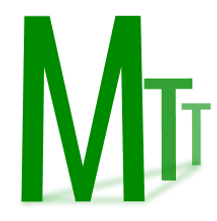
Movie Theater Seat Reservation App (Coursera)
This project was for Google's Professional UX Design Certificate course via Coursera. It is undeveloped and the scope of the project is based on the prompts and information provided by the class and then expanded on by me.
Role: Lead UX Designer
Problem
- Empathize
- Define
- Ideate
- Prototype
- Test
Prompt: Design a Movie Theater Seat Reservation App. Problem: Some Movie Theaters don't have a way to reserve seats ahead of time
Goal
We set out to create an app that allowed customers to reserve seats based on date, movie, and location. We wanted users to have a variety of theaters to select from and allow users to pre-select seats to ensure optimal experience.



Research
In order to understand the user needs, I conducted a Competitive Audit on direct and indirect companies. With the insight this provided, I was able to ideate and design based on what seemed to work for them and iterate on what appeared to be a little challenging.

Usability Study Results
I conducted a moderated usability study. I gave the testers prompts to follow and asked follow up questions. Some assumptions I made going into the research study were that the app would be self explanatory. It wasn’t until I had each participant from different backgrounds perform the tasks that I saw how differently people can see a layout and how to use it.


Site Map
Here is the first iteration of the SiteMap following a simple and commonly used Hierarchal Flat SiteMap style.
Wireframes
Taking the time to draft iterations of the homepage ensured that the elements that made it to digital wireframes would be well suited to address user pain points. For the home screen, I prioritized a quick and easy selection process to help users save time.



MockUps
My goal was to have a toggle switch at the top to see a list view or a map view of theaters in your area, giving the user options. Additionally I wanted to allow the user to reserve seats ahead of time, which was the main problem and prompt of this assignment. Thus being able to see where they would be seated and select multiple seats.
Prototypes
The low- fidelity prototype connected the primary user flow of the process of selecting a theater, movie, and seats





Final Polished Designs
After multiple iterations and testing I felt the design combined what the client (assignment) wanted and needed. Fulfilling their want for seat reservations and a need for an easily understandable user flow for all ages.
I also designed for multiple theaters instead of just one.
Results/Outcomes
Overall I received positive feedback on my final design.
- "Looks like it could be used on a professional app today”
- “Functions like I innately thought it would”
- “Solid Foundation”
- “Easy Process. Seamless”


What I learned
- Different individuals can see the same screen and flow differently.
- The importance of research and prompt questions. How prompts are worded can affect the entirety of the study and you can’t change it from tester to tester.
- I need to ask better, more open-ended questions and more clear prompts to get the users where I need them to go.
- Let your own ideas and biases go. Focus on User feedback
Whats next?
- I would like to improve on the design. Right now it's too basic and lacks a certain professional touch.
- I would like to change the color scheme. As you can see I went through some color variations and while I landed on the final colors, I feel it could be better. I feel it is a bit of an eyesore.
- Follow WCAG and NBU thought process.
- Ask an experienced UX researcher for help with unbiased, open-ended, non-leading research prompts and questions.
- Keep learning and follow other designers that I admire and practice practice practice.

Update!



